JON KANEKO-JAMES looks at the occult on film and how cinema taken diabolical liberties with magick over the years
Anyone who has a thing has been offended by a film.
Not that everyone hasn’t been irritated by a film at some point, but for those of us with a thing being offended by cinema, books, newspapers and television happens often enough to be a miserable, constant in our crushingly misunderstood lives of tortured genius.
You know what I mean by thing – whether it’s computers, history, religion or sexuality. For some it’s comic books, for others it’s literature. The thing that fills our lives, enlivens our intellects and baffles our partner.
My thing isn’t just horror films, although I love them: it’s magic. Specifically ritual magic as practised by the Western Hermetic Kabbalistic Occult Tradition.
If you need to think of a contemporary Hermetic Kabbalist think of John Dee. That’s as good as you’re going to get. Not Madonna. Never ever Madonna. Or Brittany Spears.
Occult in film gets bad press
Magic, or the occult in film, gets a bad press, or more accurately a lazy and sometimes willfully inaccurate press.
It’s not uncommon for directors to take liberties in a film – just look at the way computer software and interfaces get sexed up out of all recognition. But you’d think that just occasionally the director would look over his shoulder at the technical advisor and think “does she always cry and cut herself?”, or more pertinently “maybe I should make sure I get this right, it’s someone’s religion?”.
And it isn’t a modern disease, or one confined to Hollywood.
The first comment on film’s inaccuracy was about a Henry James adaption in the 1910s.
When asked what he thought of the film version of his book Mr James said “it was not my book… but neither was it wholly unfamiliar”. As far as the inaccuracy of Magic in films go we can take things pretty close to the beginning of 20th Century Cinema.
Der Golem, wie er in die Welt kam (1920)
Der Golem, wie er in die Welt kam (1920) is a film by Paul Wegener.
Perhaps the worst inaccuracy of this film is the backhandedly antisemitic scene where the most influential Rabbis of Prague, rather than relying on rituals passed down by secret writing and oral tradition, summon the demon Asteroth and get the secret of Golem animation.
Asteroth is a demon from the Goetia, a familiar name to anyone who’s read Alan Moore’s Promethea series, and a book we’ll be hearing a bit more about as the article goes on.
The film is the third of a series based on the myth of the Golem of Prague, a clay colossus made according to techniques derived from the Jewish Holy book, the Sepher Yetzirah.
The book itself is a main part of the corpus of holy books, and it talks about the sacredness of the Hebrew Alphabet and its life giving influence on the parts of the body.
There’s no step by step guide to golem making in the book, although quite a few do pop up over the years.
Rabbi Abraham Ibn Ezra comments in the Sepher Ha-Hayyim that the secret is in the planetary energies carried by certain letters of the Hebrew alphabet, which has been broken up into three groups by certain occultists.
They are the ‘Mother’ letters, which correspond to the three pillars in the Hebrew Tree of Life, the double letters corresponding to the planets and the remaining twelve, which correspond to the twelve signs of the zodiac.
In the film the Emperor gives in to public outcry and puts severe anti-Jewish laws in place, prompting Rabbi Loew (pronounced Lee-wah) to create the Golem to remind the Emperor of the wonders he can perform.
The Emperor is receptive, but the Golem escapes and runs amok until a young girl removes the magic star from its chest.
In reality the accepted methods for immobilising a golem include removing the scrap of paper from its mouth – thereby depriving it of the name of God powering it – or rubbing out one of the Hebrew letters inscribed on its chest to leave the word Met, meaning ‘dead’.
On the other hand if you want to be all modern about it, I suspect high explosives would work.
On the other hand, whatever your tactics the issue is morally questionable, since Rabbis generally agree that the Golem created by the means of the Sepher Yetzirah has a soul and is alive.
Night of the Demon (1957)
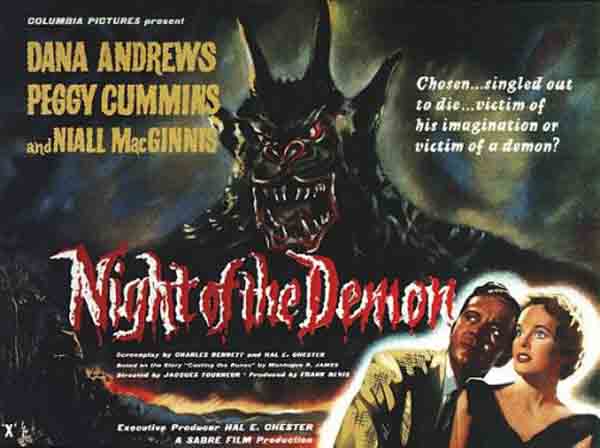
My other favourite film from the age before colour would have to be the 1957 Jack Tourneur film, Night of the Demon.
Distributed across the pond as Curse of the Demon the following year, this is a fantastic piece of Cinema based on a story by M.R.James, although it takes the plot away from James’ original setting of elderly academics passing notes to each other on the train from Croydon.
The interesting thing for me is that it represents the first cinematic depiction of a curse as I would understand it from the point of view of a practicing ritual magician. If not for the demon anyway.
Not that there isn’t a place for Goetic monstrosities in black magic, but they don’t look like the stiffly animated monkey on a bicycle thing you see in Night of the Demon. The Norse rune magicians liked their monsters, and were scared to death of beasties, but they tended to be more animal – like Fenrir, the giant wolves, or huge serpents and the like.
Not that Director Jacques Tourneur was happy about it. He maintained that he hadn’t intended the audience to ever be certain they had seen the demon for sure, and that the start and end scenes containing the monkey-puppet thing were added by Producer Hal. E. Chester. Bennett, the author, wasn’t very happy either, saying “if [Chester] walked up my driveway now, I’d shoot him dead.”
The actual use of magic in the film, while executed in a very sensitive and realistic way, can’t really be called accurate.
The action centres around a slip of paper bearing runes that is slipped into a victim’s hand, thereby attracting the attentions of the Demon.
It haunts him, drives him mad and then kills him by the intervention of a terrible, and fatal, coincidence brought about by the appearance of the horrible thing in a final hallucinatory chase. Monkey, bicycle, and so on. We know this is quite accurate, the Norse used written curses a lot, but not in the form of rows of text.
Nordic curses are more complex, like pictograms made from combining and encoding different letter shapes that make me think of the magical work of the artist Austin Osman Spare.
As far as curses in the form of rows of descriptive text go we have the WMD of Norse magic, the Nidstang Curse.
This was a series of runic insults carved onto a 10 foot pole topped by a horse’s skull.
The fact that the insults were written, and that they were written in runes would make them magically ‘true’ (this is a common factor behind a lot of written magic, that writing in certain holy scripts affects the operating system of the universe and therefore changes the world).
The pole would be invoked in a special ceremony to raise its malevolent power, and the runes would target the force.
The actual use of the runes would work in combination. One stave would often use triple Thorn and Isa runes, which had the effect of breaking the victim’s will and making him easier prey for any further curses.
We can see this in effect as Dr. John Holden is plagued by disturbing phenomenon like having all the pages of his diary torn out and being chased through the woods by a ball of smoke.
In addition to the Thorn rune there would be other effects inscribed, sometimes on other staves entirely.
In the Skírnismál the Norse hero Skirnir uses three additional rune staves – bearing the effects of lewdness, rage and impotence – to try and score a girlfriend for his master, the god Frey. That’s just the start though.
The Nidstang curse can anger the earth spirits below someone’s house, invoking them to wreak havoc and destroy their lives.
The Devil Rides Out (1968)
This brings us quite nicely another film, 1968 Hammer production, The Devil Rides Out.
This is a difficult film for me – it’s an adaption of a 1934 book by veteran occult and spy thriller writer Dennis Wheatley, and as a film it really hangs together.
People complain about the special effects, but even then I think the script is fantastic and the cast negotiate even the most naïve and clunky bits of Wheatleyan dialogue with grace.
The problem is that when Richard Matheson – author of fantastic book I Am Legend – adapted the script he retained so many of the traditional Wheatleyan characteristics: right wing naivety, ignorance and a fondness for calling things Satanic.
This isn’t the first time Wheatley uses the ‘S’ word a bit too liberally – in To the Devil a Daughter he says that all Communists are in league with the devil, and that epileptics are demonically possessed.
The Devil Rides Out’s portrayal of magic really polarises me. One of the things it does that I really admire is have the guts to use a certain ancient Sanskrit symbol, despite its being hijacked and re-styled as the Hakenkreuz by the German ruling party from the years 1933-45.
In the original 1934 writing there wouldn’t have been too much problem with using this symbol, but in the year 1968 it took a lot of guts to put a Swastika around a Jewish guy’s neck.
Incidentally if you’re interested, the Swastika was first provably discovered being used in the Indus Valley by Neolithic people from the 5th Millenium BC, meaning that by the time it was used by the NSDAP in 1920 it had been a symbol in many Asian religions for around six thousand years.
The Devil Rides Out also contains the only positive portrayal of Hermetic magic I’ve seen outside of Harry Potter.
The Duc de Richleau uses a mixture of Golden Dawn mysticism and prayer to destroy the horrors that come at the heroes as they spend their night in the circle.
The Clavicle of Solomon makes an appearance, albeit with a slightly schlocky implication that it might be bound in human skin.
It’s not impossible that he might have had it recovered in human skin, but the demon summoning magicians of that period just didn’t have so much balls.
Demonology was something to be apologised for and couched in lots of pious nonsense about the forgiving nature of god, as mocked in Christopher Marlowe’s play Doctor Faustus.
They might have gone around wearing black and eating dog flesh in private, but I doubt they would have really covered a book in human skin, at least of human skin is as distinctive as Wheatley leads us to believe it is.
Most Demonology as we see it in Western culture, particularly film, comes from the magical tradition called Goetia.
Goetia as a word comes from early Hellenistic witchcraft, but being realistic we mean it as as dark branch of ‘Natural’ magic (Theurgy) talked about in Heinrich Cornelius Agrippa’s Three Books of Occult Philosophy from the 16th Century.
The most famous use of the word Goetia is in the 19th Century Book The Goetia, composited by SL McGregor Mathers – who also translated the Sepher Yetzirah into English for the first time – from five manuscripts of the Lesser Key of Solomon the King, which is in turn thought to be based on Johan Weyer’s Pseudomonarchia Demonum.
The book is essentially a how to of evocation, littered with pious talk about only using it for good, God and Angelic inspiration that was characteristic of magic from that time.
Later sections of the Lesser Key include the Ars Paulina, a book of highly effective magical prayers, but the part the film makers are interested in is always the first section, the Demon list.
Authorship is attributed to King Solomon, but since one of the original manuscripts is titled ‘The book of Rabbi Solomon’ I think it’s more likely to date between the 15th and 17th centuries, which would put it at the same time as other works like the Grimoire of the Papal Bull by Honorius, and The Black Raven – published under the name of Marlowe’s fictional Faust.
Goetia, a film maker’s dream
It’s a film maker’s dream – there are no long acetic fasting sessions and surreal vision quests.
The ceremonies in The Goetia are ritual in its role as Theatre: lots of people, costumes, props and the promise of angry, fire breathing demons who have to be subdued with magical weapons and instruments of torture.
Never mind that to get it right the magician has to be a craftsman, scholar, smith and Saint – if he does get it right the results are, for a while, fantastic.
In reality this is where I come over a bit moralistic and feel like someone’s Mum, because I really wouldn’t advise messing with the Goetia.
If nothing else you have to make everything yourself – from the paper to the jewellery, and the ingredients aren’t cheap – but mostly because a successful Goetic operation is very much getting the tiger by the tail.
It all works for as long as you’re in the circle jabbing the poor thing with hot pokers, but you can’t stay in there forever.
Human beings don’t live that long compared to the hosts of Lucifer, and despite Weyer’s promise that God is forgiving, I think demonology probably tests the limits (also, Weyer was a skeptic, and he was mocking demonologists).
Being in hell can’t be much fun, but imagine being down there and hearing a familiar voice say “I know you, it’s mister poker up the bum.” Anyway, you can see why demonologists in movies come to a sticky end.
The 9th Gate is another voyage into Satanism – Johnny Depp plays Dean Corso, a book dealer hired to get copies of rare book, The Nine Gates of the Kingdom of Shadows.
Soon people are dying left, right and centre, he’s having sex with a nameless femme fatal and there are Satanists chasing him across Europe.
The motivating factor of the film is that each copy of the book contains an illustration allegedly drawn by Lucifer.
Movie Satanism is generally either presented as a grand affair like The Devil Rides Out, or three teenagers in a cemetery, usually for comic effect.
The latter is probably approaching the truth, not just for Satanism but for many alternative religions – small groups of people doing what they can, where they can with what they’ve got.
The grand stuff – huge rituals that are equal parts Satananism and Andrew Lloyd Webber – harks back to a strange movieland race memory of an event in 1670s France called the Case of the Poisons. I’ve always been surprised that no one ever adapted it for film.
The Case of the Poisons had everything: sex, lavishly equipped Satanism and baby killing. A group of French investigators (magistrates and police) unravelled fantasies of lavish ritual magic and infant cannibalism that went up to the highest levels of the royal court.
Informants (under torture and the threat of execution) said that Louis XIV’s chief mistress, Madame de Montespan, was so scared of losing him that she hired a Satanic witch to perform black masses to control the King. Allegedly, it worked – children were sacrificed to Asmodeus and Asteroth, and their blood and entrails secretly mixed with his food.
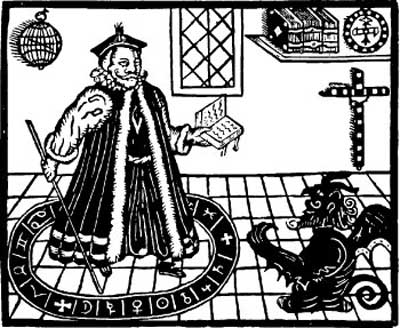
This early – and for some, authentic – case of Satanic ritual magic didn’t use the upside down cross. That was the invention of hedonistic 19th Century proto-punks like Charles Baudelaire.
Classical Satanism as we see in the Case of the Poisons had far more interesting symbols to venerate than that – see the Goetia, or the Grimiore of the Papal Bull, for details.
Of course, as always, the movies get a few things wrong.
The mixture of paganism with Satanism is the most obvious – why on earth should an essentially Christian rooted practice care about Beltane? Of course, you can blame the evil misconceptions of Pagan-burning Judeo-Christian oppressors, but there are confusing elements.
The fact is that modern Paganism was reinvented by the same pool of romantic Freemasons as the ritual magic of the Golden Dawn.
All of our memories of Paganism – except some fragments of Pagan culture surviving in ritual and folklore – come from Medieval clerical (i.e. church sponsored) portrayals of witches based on Classical practises and imagery. The Western European Pagans didn’t produce any surviving written materials, and oral traditions die.
Hence, one of the reasons why filmmakers get turned around when they write about Satanists: everyone uses the same set of pictograms for the Astrological figures; the planetary days and hours are cribbed from Heinrich Cornelius Agrippa; almost every man and his dog use the Lesser Banishing Ritual of the Pentagram in one form or another.
It takes a careful, discerning writer to spot the differences between the Goat of Mendez, the Hermetic concept of Baphomat, and the Horned God.
Then there’s Voodoo, and the other African-influenced Christian ecstatic faiths.
There are fewer excuses for inaccuracy here. For one thing, I’ve always found Voodoo practitioners to be outgoing and gregarious. Not like Hermetics – we were the weird, bullied kids at school. They talk to people and happily explain their beliefs.
And yet, there are some absolute atrocities on the Voodoo faith – Dr. Terror’s House of Horrors is fun, but we’d hardly call Roy Castle’s Voodoo Jive segment a sensitive portrayal of the faith. Two other major examples are Skeleton Key from 2005, and Wes Craven’s Serpent and the Rainbow.
The Serpent and the Rainbow (1988), example of Occult on Film
I don’t know a lot about Voodoo, at least nowhere near as much as I’d like to. I’ve always been very interested in ecstatic shamanism, but I’ve had a go and found it isn’t interested in me.
I don’t think I have that spark that you need to be really successful in dealing with the Loa – the ‘A list’ of the Voodoo spirit world. I refrain from calling them Gods. The word God implies a degree of separation, while I’ve never met a Voodoo practitioner who didn’t talk about the Loa as if they were having a cup of tea in the next room.
With all this in mind I spoke to Dr. John T Martin, a Voodoo practitioner from New Orleans and the only Anglo-Saxon Voodoo priest to be trained in Africa. He was a friend of Papa Doc Duvalier, the Voodoo priest and ruler of Haiti, and spent some time there under the Duvalier regime, so it seemed obvious that the first thing I should ask him about would be the Serpent and the Rainbow.
After talking to Dr. John, I think my favourite thing about the film is that it took liberties with the scientific nature of Wade Davis’ paper but the Voodoo presented is actually very accurate.
According to Dr. John, Zombification there was a part of the penal code – victims would be put into the deathlike state, spend varying times underground and serving the Maloi, depending on their crime. Now obviously Haiti was a slightly dodgy regime, to say the least, so the definition of crime might be a little skewed, but at least no one can say they were running around making zombies at random.
I’m also particularly impressed by the way Craven characterises the fight between Dargent Peytraud and Dr Allen.
It’s hallucinatory and astral, like the battles of wills in Night of the Demon, and The Devil Rides out. Even the bit where a harmless dinner guest is possessed to eat broken glass is superbly acted and beautifully executed.
The film Skeleton Key is more of a problem. I ask Dr. John about it and he responds that he sees it as a ‘complete fiction’ on Voodoo.
From the outset it suffers from a basic misconception – the difference between Hoodoo and Voodoo. As Dr. John tells me “most Hoodoo practitioners are white, and they are healers.”
So why then are Papa Justify and Mama Cecile black, and most definitely not on the side of the Angels? It’s an error made more confusing by the fact that Catherine Yronwode, of the Lucky Mojo website, was on board as technical advisor.
She’s also the author of an article called ‘What Hoodoo is not’ and is a historian on the subject.
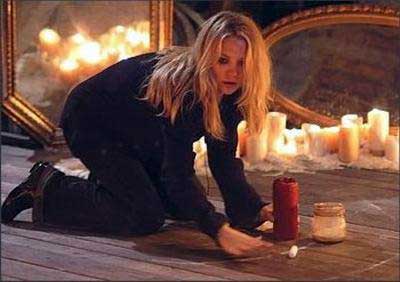
Why then is the film so fundamentally inaccurate? Probably because the director is Iain Softley – perpetrator of ineffably sexy Angelina Jolie vehicle Hackers.
Anyone who remembers the original movie might also remember that it was about as popular with the Hacking community as Skeleton Key was with Voodoo practitioners.
Of course, Skeleton Key differs from Hackers in that it’s not a very good film. It does nothing new with the genre and has a plot twist visible from next continent.
And there I finish. There are, of course, other films I would have liked to include. Edward Woodward’s The Wicker Man was on my list, but in the end I decided that it was more a straight version of The Rocky Horror Picture Show that anything else, and didn’t contain any ritual magic.
Practitioners of alternate religions aren’t alone in getting an inaccurate treatment in the movies.
The difference is, for me, that while everyone might know what an email program looks like in real life they don’t know of the truths behind things like Wheatley’s mixing of Paganism and Satanism.
Attempts to rehabilitate these communities and protect them from bad press can go too far, leading to a self conscious kind of religion, scared to mention gods, spirits and magic for fear of being labelled. That would be a shame.


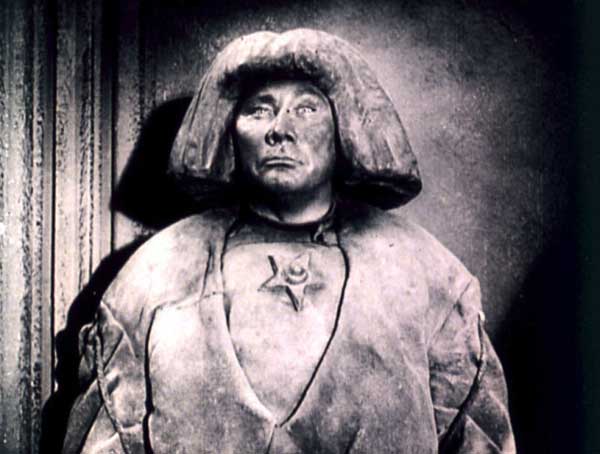
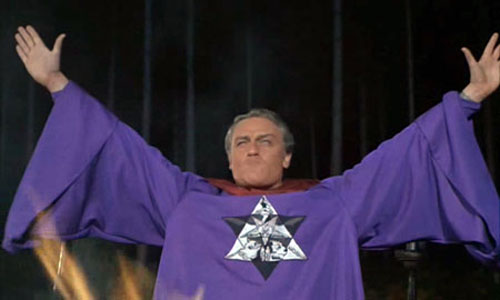
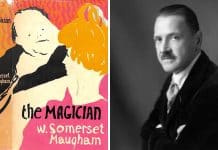
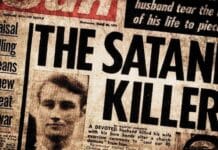




Ghoulies was a half-decent goetic film in my opinion, of course the demons themselves were rather silly, but the script was good and the magick was rather accurate. The guy was even making his own jewelry which you referred to in your article
“Night of the Demon” is a film directed by Jacques Tourneur, not “Jack.”